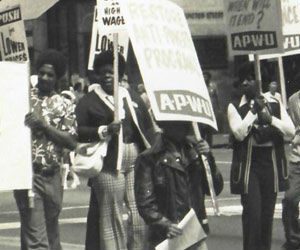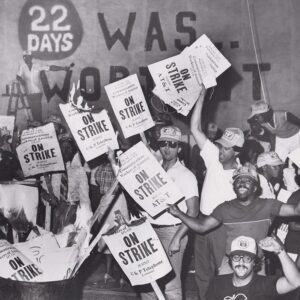March 8, 2024
The History of International Working Women’s Day
International Working Women’s Day (IWD) is a day of collective global activism and celebration that belongs to all those committed to progressing women’s equality. Celebrating the social, economic, cultural, and political advancement of women, the day also marks a call to action for accelerating the continued fight for equality.
Marked annually on March 8, the day was originally known as International Working Women’s Day. It was and remains a call for change that was rooted in the labor movement’s struggle for social, political, and economic rights of working class women.
The first Woman’s Day in New York was observed on February 23, 1909 in the wake of the Uprising of 20,000 strike of mostly young, immigrant women garment workers. Thousands flocked to meetings throughout the city to hear featured addresses by prominent suffragists such as the Women Trade Union League’s Lenora O’Reilly. Many speakers touched on the sexual, industrial, and political exploitation faced by working women, and their desire for equal compensation to that of men.
The success of the first Women’s Day inspired delegates of the second International Conference of Working Women to adopt it at their 1910 meeting in Copenhagen, Denmark. Clara Zetkin, Leader of the Women’s Office for the Social Democratic Party in Germany, proposed an International Women’s Day, to be held on the same day across the world, to fight for their demands. That day was eventually determined to be March 8. Consisting of over 100 women from 17 countries, representing unions, socialist parties, and working women’s clubs, the conference body unanimously agreed, and thus International Working Women’s Day was born.
Some notable international events for the advancement of women include:
1909: “The Uprising of 20,000” strike by New York women’s shirtwaist makers lasted 14 weeks comprised of 20,000 workers. Represented by the International Ladies Garment Workers Union (ILGWU) Local 25, the impact of this strike led to better wages, shorter hours, and the right to collectively bargain.
March 25, 1911: Tragedy struck in New York City, when the Triangle Shirtwaist Factory fire caused the deaths of over 100 immigrant women. This disaster, which was the result of corporate greed, brought attention to unsafe working conditions and led to significant labor legislation to improved safety standards in the U.S.
1912: “Bread & Roses” strike took place between January and March in Lawrence, MA. Immigrant textile workers fought against a cut in work hours and wages. The collective action saw 23,000 women, men, and children of various nationalities come together for a common cause.
March 8, 1917: Russian women marched for “Bread and Peace” in protest to World War 1. Four days later, the Czar granted women the right to vote.
August 18, 1920: The 19th amendment to the U.S Constitution, which granted women the right to vote, was ratified.
The APWU National Executive Board adopted a resolution signifying the great contributions of US working women who have been at the forefront of battles that shaped our nation in the struggle for social and economic justice.
Our women’s committee, APWU POWER (Post Office Women for Equal Rights) was founded in St. Louis on April 28, 1979 to recognize the importance of women in our union, unite women across all crafts, uplift women into leadership positions, and address their specific concerns within the framework of the APWU Constitution.
APWU honors women for the important role they have played and continue to play in shaping the labor movement, advancing social justice, and fighting for inclusion and equality.
Sources:
International Women’s Day; The Independent; The Smithsonian; Jewish Women’s Archive; UE



